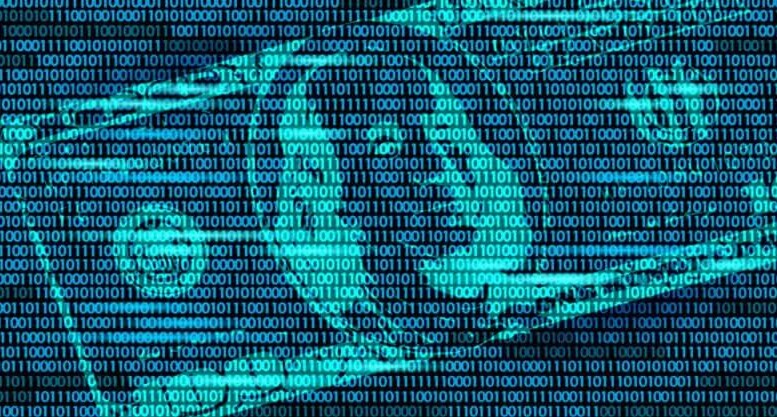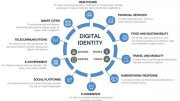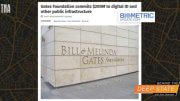Playback speed:
This Analysis by Dr. Joseph Mercola has been FACT CHECKED ü
Why Crashing Banks Will Usher in Digital Currency.
Like a cascading domino effect, three large banks have failed in a single week – one of which was the second largest bank failure in US history. Will the government’s biased bailout system end up fueling a small handful of mega-banks, thus facilitating the rollout of a central bank digital currency?
Story at-a-glance.
- Three large banks failed in a single week in March 2023, and the ripple effect could easily take down the entire banking system. The cascading bank failures began March 8 with the shut down and liquidation of the crypto bank Silvergate Capital. It had invested deposits in Treasury bonds, which lost value as interest rates were hiked to stem inflation.
- March 10, Silicon Valley Bank (SVB) failed. It too was invested in government bonds, which again became a problem when customers began making large fear-based withdrawals. This was the second largest bank failure in U.S. history, and the largest since the financial crisis in 2008.
- Spooked by the failure of Silicon Valley Bank, Signature Bank customers withdrew more than $10 billion in the days that followed, resulting in the shutdown of Signature Bank on March 12.
- Government regulators have promised to make customers of the two banks “whole” by insuring all funds, not just the first $250,000. Only select “too big to fail” banks will be eligible for this kind of special treatment. Small local banks will not be eligible.
- The most likely outcome of this bailout system is a consolidation of banks until we’re left with just a small number of mega-banks. This consolidation, in turn, will facilitate the rollout of a central bank digital currency (CBDC), as the banking industry will be a tight-knit monopoly.
Three large banks failed in a single week in March 2023, and the ripple effect could easily take down the entire banking system, although government officials insist the banking sector “remains strong” and that the problems faced by these banks “do not appear to be widespread.”1
Cascading Domino of Bank Failures
The cascading bank failures began March 8 with the shut down and liquidation of the crypto bank Silvergate Capital.2 As reported by Government Executive:3
“During 2022, Silvergate’s deposit base grew dramatically, almost doubling its assets to $210 billion. But the bank did not have either the administrative capacity or market demand to lend out all of the money, as banks normally do.
So, it invested the excess deposits in Treasury bonds and mortgage investment products. But the bond purchases became a problem as the Federal Reserve began to raise interest rates to address inflation.”
Two days later, March 10, Silicon Valley Bank (SVB) — the 16th largest bank in the U.S.4 — failed. It too was invested in government bonds, which again became a problem when customers began making large fear-based withdrawals. This was the second largest bank failure in U.S. history, and the largest since the financial crisis in 2008.
Allegedly “spooked” by the failure of Silicon Valley Bank, Signature Bank customers then withdrew more than $10 billion, resulting in the shutdown of Signature Bank on March 12, making it the third-largest bank failure in history.5,6
The Federal Deposit Insurance Corp. (FDIC) took control of Silicon Valley Bank and Signature, and government regulators have promised to make all customers “whole” by insuring all funds, not just the first $250,000. In other words, government is bailing out the banking system yet again, on the taxpayers’ dime.
Within a week, Signature was bought up by Flagstar Bank, a subsidiary of New York Community Bancorp (one of the largest banks in the U.S.).7 According to the FDIC, anyone who had deposits at Signature Bank will automatically become a client of Flagstar Bank, except for crypto banking clients, as Signature’s digital banking business was not included in Flagstar’s bid.8
The FDIC is also left holding $11 billion-worth of “toxic waste debt” in the form of commercial real estate loans for rent-regulated buildings, as this debt portfolio was also rejected by Flagstar.9 The FDIC is still looking for a buyer for Silicon Valley Bank.
Is the US Banking System Really Sound?
President Joe Biden’s comments shortly after the three bank failures was that “Americans can have confidence that the banking system is safe” and that “Your deposits will be there when you need them.” Treasury Secretary Janet Yellen also insists the U.S. banking system “remains sound.”10
Should we believe them? Probably not. Within days of those statements, the contagion had already spread to Credit Suisse, the largest bank in Switzerland. After government initially stepped in to cover some of the losses, the Swiss banking giant was sold to the UBS Group.11 The acquisition was announced March 19.
It’s hard to believe the ripple effects of bank failures of this magnitude can really be stopped. The question is, should we even try? As reported by Government Executive,12 government has no obligation to step in and bail these banks out under current banking regulations.
What’s more, the biased bailout system now being put into place will virtually guarantee further bank consolidations and the widespread rollout of a central bank digital currency (CBDC). As reported by Newsweek March 16, 2023:13
“During a Senate Finance Committee hearing, Yellen was grilled by Oklahoma GOP Senator James Lankford over the Biden administration’s handling of the banking crisis, which saw the federal government offer a multibillion-dollar bailout to Silicon Valley Bank (SVB) after a bank run left it without enough cash to back up hundreds of millions of dollars of its clients’ deposits. Most of those deposits were not insured.
To address the crisis, U.S. bank regulators announced a plan last weekend to fully insure all deposits at SVB as well as the crypto-friendly Signature Bank.
This would cover all deposits above the Federal Deposit Insurance Corp.’s insured limit of $250,000. Federal officials said the plan would be paid for by a special fee levied on all FDIC institutions.
While all banks would be required to pay for the plan, Yellen said under questioning Thursday that it would not apply to every bank. She said the federal government would extend the privilege only to troubled banks whose failure would have a profound impact on the U.S. financial system.
We would appreciate your donation.
Uninsured deposits, Yellen said, would be covered only if a ‘failure to protect uninsured depositors would create systemic risk and significant economic and financial consequences,’ which would be decided by a supermajority of the FDIC’s board members, Yellen, and the President …
In further questioning, Lankford asked Yellen whether that policy’s implication would be that small banks would become less appealing to depositors with accounts exceeding the FDIC’s $250,000 insurance threshold …
Amid the sharp increase in bank mergers over the past decade, Lankford expressed concern that the trend could only accelerate under current policy, causing the U.S. banking system to become less resilient.
“I’m concerned you’re … encouraging anyone who has a large deposit at a community bank to [hear], ‘We’re not going to make you whole, but if you go to one of our preferred banks, we will make you whole,'” Lankford told Yellen. Yellen replied, ‘That’s certainly not something that we’re encouraging.'”
And yet that’s exactly what this policy will be encouraging. Actions speak louder than words, and in this case, the outcome of this policy is quite clear, regardless of what Yellen is saying.
To recap, the FDIC will only insure deposits up to $250,000 if your money is in a small bank, but if your money is in a big bank, uninsured deposits over that amount will be covered as well, should the bank fail.
Why Bank Crashes Will Facilitate CBDC Rollout
Adding insult to injury, while the system is clearly biased and won’t protect everyone, all banks (and hence account holders) will be forced to pay this “special fee” to the FDIC that will, supposedly, insure all these uninsured deposits at preferred banks.
The most likely outcome of this bailout system is a consolidation of banks until we’re left with just a small number of mega-banks. We’re already starting to see the early phases of this, with “the big three” — Bank of America, Citigroup and Wells Fargo — reporting14 a deposit spike in the wake of the SVB collapse and Yellen’s announcement that only certain preferred banks will be covered above FDIC insurance limits.
This consolidation, in turn, will facilitate the rollout of a central bank digital currency (CBDC), as the banking industry will be a very tight-knit monopoly. Let’s say there are only half a dozen banks in all of America. All they have to do is make the switch to CBDC as a group, and anyone with a bank account in America will be automatically trapped in the new system. As reported by News Punch:15
“What we are seeing is a push towards Global Government that is being camouflaged and cloaked in humanitarianism, multiculturalism, as well as manufactured threats such as global warming and pandemics in order to condition the population into accepting globalization and a One World Government.
In order for this to occur the elite are planning to create a global financial crisis the likes of which the world has never seen. Out of the ashes of this financial crisis will rise the phoenix of is a New International Economic Order. The public will be told that the new order is the only way to stabilize the world economy and save what little remains of their wealth …
People often ask why the globalist elite would collapse the world economy. Wouldn’t that mean they destroy their own wealth in the process? The answer is no. The elite have been consolidating their wealth in order to protect it for centuries … When the world financial system finally crashes the elite will be positioned to buy what’s left for pennies on the dollar.
Where does this leave the rest of the world financially? The answer is in bondage to a Techno-Communist World Governmental System led by the World Economic Forum in Davos and the hidden hands that control the public face of that cabal. If you pay attention now you can see that everything around you is being engineered towards this one goal …
The globalist elite are also forcing their vassal states to move towards centralizing currency in the form of a … CBDC, which by the way, is not currency at all – it is software designed as a tool of total social control … If they can cancel out your bank balance with a single keystroke, then you have no freedom, no autonomy. You are a slave …”
UCC Code Update Is Stealth Attempt to Steal Our Freedom
The fact that CBDCs are intended as financial shackles to control you within what amounts to an open-air prison is also noted by South Dakota Gov. Kristi Noem16 in the Fox News interview above.
She highlights a proposed Uniform Commercial Code (UCC) update that seeks to redefine “currency” to exclude decentralized crypto currencies, effectively putting the government on the path to a CBDC monopoly. Noem vetoed the bill and is urging other states to reject it as well.
The UCC Code is a set of laws that govern commercial transactions in the U.S. While not a federal law, it’s a set of laws that states agree to adopt in a uniform fashion to facilitate interstate business. So, it appears they intend to begin the financial takeover by rolling out the CBDC on the state level first, and legislators who believe in freedom must denounce all such plans.
Government Bonds Are Now the ‘Toxic Asset’
According to News Punch,17 the destruction of Silicon Valley Bank was intentional. While I cannot vouch for that, it’s interesting to note that SVB was in relatively good shape before it went kaput overnight.
As explained by the Sovereign Research and Advisory Group in an article titled “If SVB Is Insolvent, So Is Everyone Else,”18 the 2008 banking crash occurred because Lehman Brothers and other banks had used depositors’ money to buy extremely risky no-money-down mortgage bonds.
While the economy was good, banks earned hefty profits from these toxic assets, but as soon as the economy downshifted, these toxic securities plunged in value and wiped them out.
This time, however, the toxic asset is not mortgages obtained by people with no job, income or history of paying their bills. No, this time, it’s U.S. government bonds that are sinking banks, and these bonds are supposed to be the safest investment there is. Sovereign Research and Advisory Group writes:19
“Silicon Valley Bank was no Lehman Brothers. Whereas Lehman bet almost ALL of its balance sheet on those risky mortgage bonds, SVB actually had a surprisingly conservative balance sheet.
According to the bank’s annual financial statements from December 31 of last year, SVB had $173 billion in customer deposits, yet “only” $74 billion in loans. I know this sounds ridiculous, but banks typically loan out MOST of their depositors’ money.
Wells Fargo, for example, recently reported $1.38 trillion in deposits. $955 billion of that is loaned out. That means Wells Fargo has made loans with nearly 70% of its customer’s money, while SVB had a more conservative ‘loan-to-deposit ratio’ of roughly 42%.
Point is, SVB did not fail because they were making a bunch of high-risk NINJA loans. Far from it. SVB failed because they parked the majority of their depositors’ money ($119.9 billion) in US GOVERNMENT BONDS. This is the really extraordinary part of this drama.
US government bonds are supposed to be the safest, most ‘risk free’ asset in the world. But that’s totally untrue, because even government bonds can lose value. And that’s exactly what happened.
Most of SVB’s portfolio was in long-term government bonds, like 10-year Treasury notes. And these have been extremely volatile. In March 2020, for example, interest rates were so low that the Treasury Department sold some 10-year Treasury notes at yields as low as 0.08%.
But interest rates have increased so much since then; last week the 10-year Treasury yield was more than 4%. And this is an enormous difference.
If you’re not terribly familiar with the bond market, one of the most important things to understand is that bonds lose value as interest rates rise. And this is what happened to Silicon Valley Bank.
SVB loaded up on long-term government bonds when interest rates were much lower; the average weighted yield in their bond portfolio, in fact, was just 1.78%. But interest rates have been rising rapidly. The same bonds that SVB bought 2-3 years ago at 1.78% now yield between 3.5% and 5%, meaning that SVB was sitting on steep losses.”
All Banks, Including the Fed, Are Likely Insolvent
According to the SVB’s 2022 annual report published January 19, 2023, they had $16 billion in capital and $15 billion in unrealized losses on their government bonds. So, they were ripe for a wipeout.20
The problem is, if SVB, with its conservative loan-to-deposit ratio ended up insolvent due to government bonds tanking, then that likely means that everyone else is insolvent as well, including state and local governments, large corporations of all kinds, and the Federal Reserve. Anyone holding government bonds is sitting on huge losses as interest rates rise.
According to FDIC estimates, the unrealized losses of U.S. banks is approximately $650 billion and rising. Meanwhile, the FDIC’s deposit insurance fund (DIF), the fund that’s supposed to cover insured deposits (accounts up to $250,000), has a balance of just $128 billion.21 See the problem? What’s worse, the DIF money doesn’t just sit there. It too is invested — in U.S. government bonds! As noted by the Sovereign Research and Advisory Group:22
“So even the FDIC is suffering unrealized losses in its insurance fund, which is supposed to bail out banks that fail from their unrealized losses. You can’t make this stuff up, it’s ridiculous!”
And it’s only going to get worse if the Federal Reserve continues to increase interest rates. The problem is, interest rates need to be raised to curtail runaway inflation, but if they go up, more banks will sink due to their holdings in government bonds.23,24 There’s just no way out.
Add to this insurmountable problem the fact that President Biden’s 2024 budget will raise the federal debt to $50.7 trillion by the end of 2033. It’s currently $31.459 trillion.25 That’s a staggering amount of debt.
From a household perspective, you have no choice but to file for bankruptcy once your income cannot even cover the interest payment on your debt, and that’s basically where we are on a national level. As noted by The Balance:26
“Most creditors don’t worry about a nation’s debt, also known as ‘sovereign debt,’ until it’s more than 77% of gross domestic product (GDP). That’s the point at which added debt cuts into annual economic growth, according to the World Bank. At the end of the second quarter of 2021, the U.S. debt-to-GDP ratio was 125%. That’s much higher than the tipping point …”
Are You Prepared?
All of this is why it’s so important to prepare and become as independent as possible. The things we’ve taken for granted our entire lives may soon vanish, and what’s coming to replace them are not in your best interest unless you’re part of the globalist cabal that will exempt themselves from the slave system.
Becoming more resilient in the face of these changes could include moving cash into things that have a greater chance of withstanding inflation, such as precious metals (the actual metals, not the paper) and land, for example, and/or tradeable items. Shelf-stable foods may also be a wise investment, as could securing a private well or building a rain catchment system.
Also remember that artificial intelligence is the “beast” that drives the coming slave system. A formula created by the World Economic Forum’s philosophical guru, Yuval Noah Harari, describes the technocrats’ ever-growing ability to hack humans: B x C x D = AHH.27
B stands for biological knowledge, C is computing power, D is data and AHH is the level of ability to hack a human being. AI needs massive amounts of up-to-the-minute data for the control system to work, so “starving the beast” also needs to be on your list.
That means eliminating apps and devices that collect your personal data, Google and Facebook being two of the biggest data miners. It also means rejecting CBDCs, as it’s not really a currency but a tool for population control, and digital identity, which will track everything you do, both online and in the real world, and will strip you of basic rights and freedoms based on your social credit score.
Even the FDIC is suffering unrealized losses in its insurance fund, which is supposed to bail out banks that fail from their unrealized losses. ~ Sovereign Research and Advisory Group





